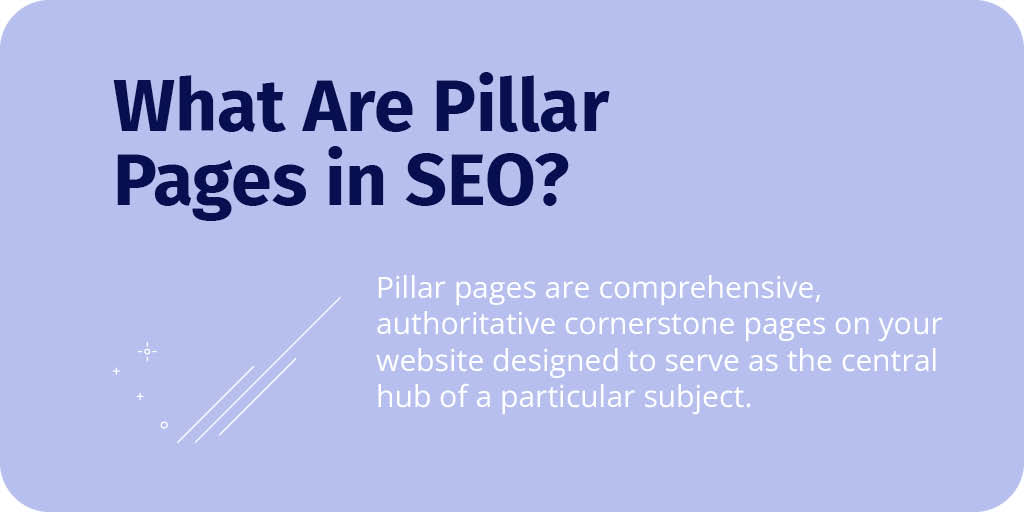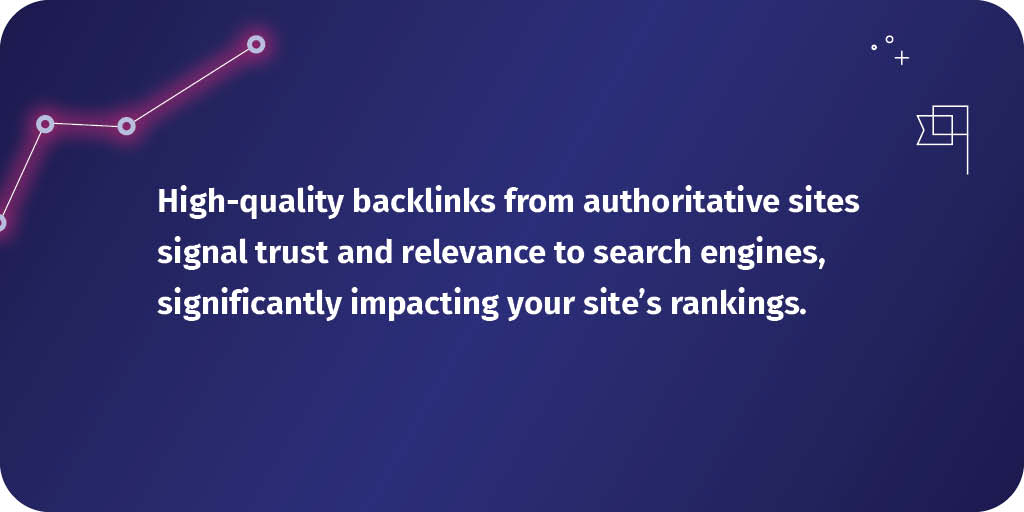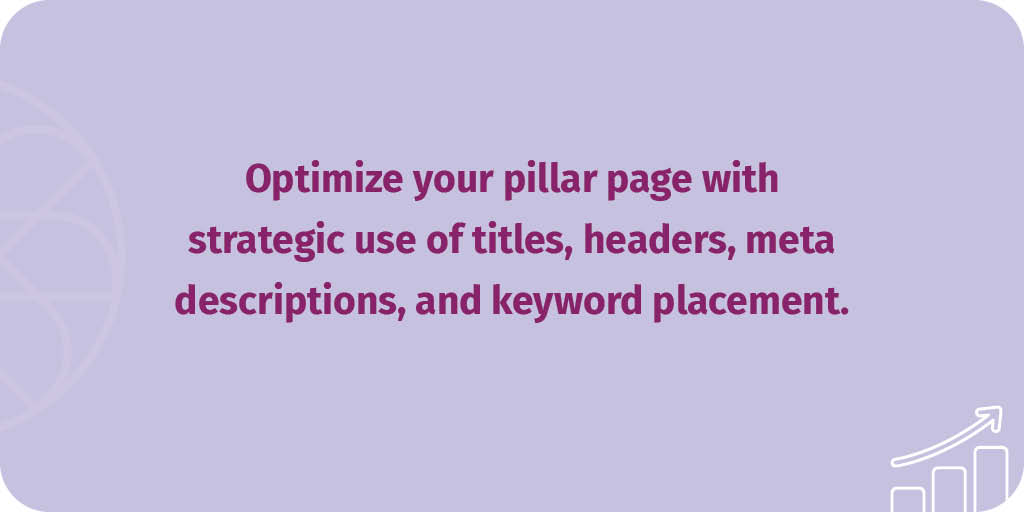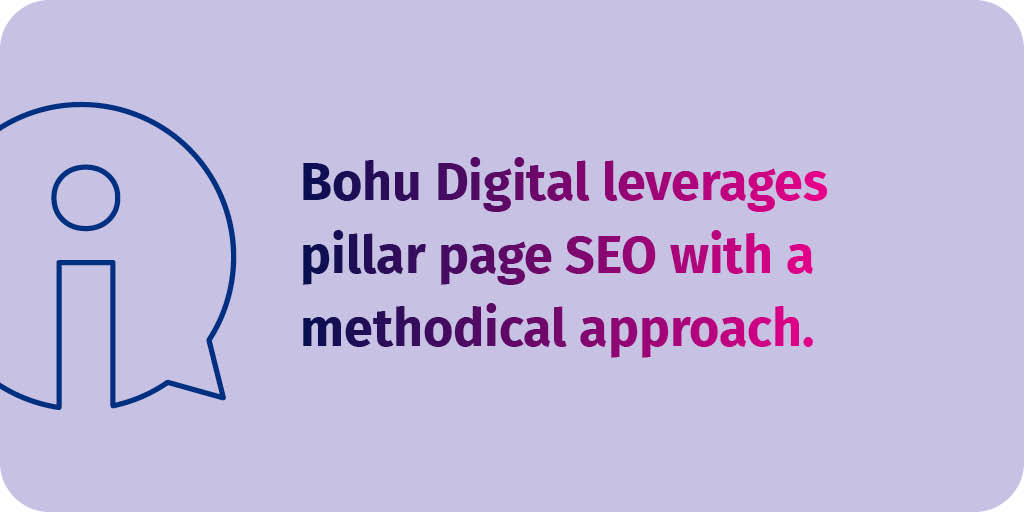Why Pillar Pages Matter for SEO
Pillar pages have become an essential feature of a robust SEO content strategy for today’s high-performing websites. By acting as the organizational anchor for related content, these comprehensive guides not only improve Pillar page SEO but also reshape how both users and search engines navigate and understand your website. Businesses that embrace pillar content witness measurable improvements in organic reach, user engagement, and authority within their industry. In a digital marketplace where Google’s algorithms continue to prioritize content structure and expertise, establishing pillar pages is an SEO decision no business owner or marketing professional should ignore.
Pillar Pages for SEO: What Are They? – Definition and Guide
At their core, pillar pages are in-depth, authoritative pieces of content built around a broad topic that is central to your business. Pillar pages address all important aspects of a broad topic, providing a complete understanding for readers. These pages provide a holistic overview, serving as both educational resources and navigational hubs that link out to more detailed, related articles—also known as cluster content. A pillar page covers every relevant detail of the subject. This structure signals to search engines that your website offers expertise, covering user queries comprehensively within a focused niche and serving as a complete guide for users seeking comprehensive information.
Role of Pillar Pages in Modern SEO and Content Strategy
Pillar pages have revolutionized how businesses approach SEO content creation and organization, as they help organize and structure content into pillar pages and topic clusters for better SEO. By bringing together interconnected pieces of information under clear topic clusters, they enhance the semantic relevance of your content and facilitate better indexing by search engines.
Organizing content into pillar pages and clusters is a key keyword strategy for improving search engine visibility, as it creates a logical, interconnected structure that strengthens site architecture and user experience.
The result? Higher SERP rankings, increased site authority, and improved user pathways. For marketing professionals, pillar content is a catalyst for generating long-term, sustainable organic traffic.
How Bohu Digital Leverages Pillar Content for SEO Success
Bohu Digital excels in crafting bespoke Pillar content examples tailored to each client’s unique voice and goals. Each pillar page is carefully created to serve as a cornerstone of the client’s content strategy. Leveraging years of expertise and industry-leading tools, Bohu Digital develops pillar pages that not only address critical customer search intent but also seamlessly guide users through your site’s wider content universe. With a track record of elevating brands through holistic and strategic SEO approaches, Bohu Digital positions your business at the forefront of your industry, maximizing both discoverability and conversion.
Overview of Article Structure
In the sections that follow, this guide will break down what pillar pages are, their pivotal role in Pillar page SEO, the four pillars of effective SEO, step-by-step instructions for building pillar pages that perform, real-world Pillar content examples, and why your business should invest in this powerful SEO strategy with Bohu Digital. Turn the page to uncover the modern blueprint for predictable, scalable content marketing success, and learn how to plan and execute an effective pillar page strategy.
What Are Pillar Pages in SEO?
Pillar pages are comprehensive, authoritative cornerstone pages on your website designed to serve as the central hub of a particular subject. A pillar page is a single page that thoroughly covers a broad topic and connects to and summarizes multiple related subtopics, also known as content clusters. These pages are essential to modern Pillar page SEO strategies, giving search engines and users a clear topical map of your expertise. They enable improved site structure and visibility by creating logical pathways between high-level topics and more detailed, supporting content.
The core purpose of a pillar page is to offer a thorough overview of a broad topic—such as “SEO Strategies” or “Content Marketing”—while linking out to individual, in-depth articles (the cluster content) that explore subtopics in greater detail. This approach accomplishes two key objectives: it consolidates your authority on a subject in the eyes of search engines and delivers an excellent user experience by guiding your audience through a logical, organized set of resources.
Without a clear pillar structure, multiple pages on the same topic may end up competing against each other in search rankings, which can negatively impact your SEO performance.

How Do Pillar Pages Fit Within Content Marketing?
Pillar pages are vital in contemporary content marketing because they position your business as a thought leader, help address customer pain points more comprehensively, and nurture prospects further down the funnel. By interlinking the pillar content with their related articles, you build a “topic cluster”—a strategic grouping of resources that sends strong topical relevance signals to search engines. Bohu Digital leverages this model to help clients not only rank higher but also engage visitors longer, encouraging deeper website exploration and increased conversion opportunities. This approach can also lead to higher conversion rates by guiding users through a logical content journey.
What Is the Relationship Between Pillar Pages and Topic Clusters?
The content cluster model works by allowing a single authoritative page (the pillar) to anchor several supporting pages (the clusters). Each supporting page dives into specific keywords or subtopics, all of which link back to the pillar, reinforcing the main page’s authority while passing link equity throughout the cluster. This structure aids SEO by clarifying your content architecture, ensuring that both users and search engines understand the connections between your offerings and the breadth of your knowledge. This interconnected approach creates a strong content network that benefits both users and search engines.
Pillar Pages vs. Regular Blog Posts: What’s the Difference?
Unlike standard blog posts, which typically focus on a niche topic or a specific audience question, pillar pages provide a strategic overview of an entire subject. Pillar pages are longer, more structured, and heavily interlinked—often serving as index-style guides with summaries and links to relevant subtopics for easy navigation. Resource pillar pages and other types of pillar content serve the same purpose of supporting a main topic with relevant links and resources, whether through depth or breadth. This structure not only supports higher search rankings through internal linking but also helps businesses build authority and trust with users looking for a one-stop, definitive resource. At Bohu Digital, we design pillar pages that are visually appealing, user-friendly, and optimized to amplify your overall Pillar page SEO impact.
Pillar Page Examples in Practice
Effective real-world pillar page examples often include deep-dive guides on topics like “The Ultimate Guide to B2B SEO” or “Everything You Need to Know About Content Marketing.” Generating content ideas is essential for building effective pillar pages, as it helps identify relevant subtopics and structure your content strategy. Each acts as a content gateway, leading readers to highly relevant supporting resources. For instance, Bohu Digital’s knowledge hubs exemplify best practices, combining thorough explanatory content, well-organized cluster links, and engaging design. Our approach ensures your pillar pages drive both organic visibility and meaningful business outcomes.
What Are the 4 Pillars of SEO?
The 4 pillars of SEO—Technical SEO, On-Page SEO, Off-Page SEO, and Content—serve as the foundational framework for a successful digital marketing strategy. A service pillar is a type of pillar page that centralizes information about a specific service offering, acting as an authoritative and detailed hub to educate and guide potential customers. Mastering each pillar is essential for business owners and marketing professionals looking to outperform competitors in search rankings and drive sustainable, quality traffic to their websites. By balancing attention across these four areas and leveraging the expertise of Bohu Digital, your business can achieve higher visibility, greater authority, and improved user experience in a competitive digital landscape.
1. Technical SEO: The Foundation of Search Visibility
Technical SEO ensures that your website is accessible, crawlable, and optimized for indexation by search engines. This involves optimizing site speed, mobile responsiveness, secure HTTPS protocols, structured data implementation, and eliminating crawling errors. If your technical foundation is weak, even the most compelling content may go unnoticed by Google. Bohu Digital’s SEO specialists conduct comprehensive site audits to identify and resolve barriers, ensuring your website performs flawlessly and delivers a seamless user experience.
2. On-Page SEO: Crafting Optimized, User-Focused Content
On-Page SEO focuses on optimizing individual web pages for targeted keywords, engaging meta descriptions, effective title tags, headers, and meaningful internal linking. Structured content increases both relevance and readability, which are key drivers for user engagement and search engine rankings. Pillar pages directly support On-Page SEO by integrating semantically related subtopics and acting as authoritative hubs that guide users—and search engines—through your content ecosystem.
3. Off-Page SEO: Building Authority and Trust
Off-Page SEO refers to all external factors affecting your site’s reputation, primarily through backlinks, brand mentions, and social signals. High-quality backlinks from authoritative sites signal trust and relevance to search engines, significantly impacting your site’s rankings. Bohu Digital assists clients in executing effective link acquisition strategies, ensuring your pillar pages become trusted references within your industry.

4. Content: The Engine of SEO Growth
The fourth pillar, content, is the engine that powers organic growth. Content must be comprehensive, up-to-date, and tailored to audience intent. Well-crafted pillar content acts as a resourceful answer hub, providing in-depth coverage of your main topics and seamlessly linking to related cluster content. Maintaining and expanding pillar pages on the same topic enhances authority and relevance, ensuring your site covers subtopics and related queries under a central theme. Bohu Digital specializes in developing robust content strategies that combine keyword research, storytelling, and SEO best practices for optimal ranking potential.
How Do Pillar Pages Support All Four SEO Pillars?
Pillar pages play a critical role by unifying every aspect of the SEO framework. They are strategically designed for strong technical performance (fast loading, mobile-friendly, structured data); demonstrate on-page excellence (proper headers, internal links, concise summaries); attract off-page recognition (shareable, reference-worthy resources that others want to link to); and embody content depth and authority. While pillar pages provide a broad overview of a topic, cluster content explores subtopics in more detail, enhancing both SEO authority and user understanding. When you partner with Bohu Digital, you gain access to a proven process for conceptualizing and executing pillar pages that support all four pillars, setting your website up for long-term search success and business growth.
How To Create Pillar Pages
Creating effective pillar pages is a pivotal step in building an impactful digital presence and elevating your SEO strategy. To maximize results, it’s important to start creating pillar pages early in your content strategy process, laying the groundwork for future growth and organization. Pillar pages serve as comprehensive hubs for a core topic, connecting to various clusters of supporting content and driving authority, relevance, and improved user experience. Building one requires a blend of strong research, clear organization, content expertise, and ongoing optimization. Bohu Digital specializes in crafting pillar pages that not only rank but also help users and search engines navigate your site’s expertise seamlessly.
How Do You Identify Your Core Topic and Relevant Clusters?
Begin by researching your audience’s key pain points and questions, and by understanding your target audience to ensure content relevance. Search traffic opportunities with tools like SEMrush, Ahrefs, or Google Keyword Planner. The ideal core topic is broad enough to attract significant interest yet focused enough so your business can own the conversation. For example, if you’re in digital marketing, a core topic might be “Content Marketing,” surrounded by clusters such as “SEO Content Writing,” “Pillar Page Examples,” and “Internal Linking Strategies.” Bohu Digital’s team uses data-driven insights and competitor gap analysis to ensure the chosen core topic aligns perfectly with both high-intent keywords and business goals.
Developing a Clear Content Structure
An effective pillar page template starts with a compelling introduction and an easy-to-navigate index of subtopics. Structure your page with logical flows: introduce the central theme, provide an overview of each supporting topic cluster, and interlink accordingly. Use header tags (H2s and H3s) to break up content, ensuring that both search engines and visitors can easily scan the information. Bohu Digital advocates for a modular, user-first design—ensuring that content clusters can be easily added or updated as your expertise grows. As you expand your content, strategically add links to new cluster pages to strengthen your internal linking structure and maintain a cohesive site architecture.
Gathering and Linking Supporting Content Clusters
The value of a pillar page is amplified by the quality and depth of the supporting cluster content. Gather or create detailed blog posts, guides, or resource pages dedicated to each identified subtopic. Each of these should be internally linked to the pillar and vice versa. Bohu Digital’s approach involves content audits and purposeful interlinking strategies, dramatically increasing topic authority and session duration.
Writing Comprehensive, Evergreen Content
Pillar pages should offer exhaustive, up-to-date information relevant to your audience. Focus on evergreen content that remains valuable over time, supplemented with data, expert insights, and practical advice. To maximize SEO impact, write pillar page content that aligns with SEO best practices by covering key topics, using clear anchor texts, and ensuring the writing is natural and user-focused. This exhaustive approach both fulfills search intent and naturally attracts backlinks, which Bohu Digital leverages for ongoing SEO strength.
Best Practices for Internal Linking
Perfecting internal linking is essential—ensure every cluster post points to the pillar page using relevant anchor text and vice versa. Logical, intuitive linking boosts crawlability and helps distribute authority throughout your site. Bohu Digital’s proprietary link mapping methods harness these best practices for scalable SEO results.
On-Page SEO and User-Centric Optimization
Optimize your pillar page with strategic use of titles, headers, meta descriptions, and keyword placement. Ensure that keywords are used in a way that makes sense for both search engines and human readers, providing contextually appropriate usage rather than keyword stuffing. Include schema markup where appropriate and develop a mobile-friendly, reader-centric design. Bohu Digital’s content strategies always prioritize accessibility, speed, and engaging layouts—so your audience stays longer and acts more often.

How To Create an SEO Page? (Step-By-Step With Pillar Page Template)
Creating a high-performing SEO page, especially in the form of a pillar page, requires a strategic and meticulous approach. First, it starts with goal-setting and keyword research, followed by careful outlining and structuring. For business owners and marketing professionals, a well-crafted SEO page will not only enhance your website’s visibility but also improve your appearance in search engine results by optimizing pillar pages for better SERP rankings. Additionally, strong internal linking and a solid content structure can boost your search results rankings, making your content more discoverable and authoritative. Bohu Digital excels in building pillar pages that anchor your content strategy, maximize internal linking, and align closely with user search intent.
Setting Goals and Target Keywords: Laying the Foundation
Before drafting your SEO page, define your primary objectives. Are you aiming for lead generation, brand awareness, or educational authority? Next, conduct thorough keyword research using tools like SEMrush, Ahrefs, or Google Keyword Planner to identify high-value, relevant keywords for your pillar topic. This becomes the foundation for your content brief, which should outline the target keywords, audience intent, and desired outcomes. At Bohu Digital, we ensure every content brief is data-driven and aligns with your broader marketing goals.
Choosing the Pillar Page Topic Based on Search Intent
Select a central theme broad enough to cover multiple related topics—think of it as the core hub in your content cluster model. This topic should be evergreen and meet the primary search intent of your audience. For example, “Comprehensive Guide to Content Marketing” can serve as a pillar topic, offering opportunities to branch into subtopics like SEO, email marketing, and social media strategy. Bohu Digital helps clients uncover high-value pillar topics that stake out leadership niches in competitive markets.
Creating an Outline: Headlines, Sub-Sections, and Featured Clusters
Structure is key for both SEO and user experience. Start by mapping out your main headlines (H2s and H3s) to ensure logical progression through the page. Include an index or table of contents at the top, so users can navigate easily. Each section should link to deeper, cluster pages that explore subtopics in detail—this internal linking reinforces your topic authority for search engines. Our team at Bohu Digital specializes in building strong, hierarchical outlines that are easy to scale and update as your site grows.
Example Pillar Page Template: Layout and Components
A well-optimized pillar page might look like this:
Title and Compelling Introduction: Clearly define the purpose and what readers will gain.
Table of Contents: Hyperlinked for quick navigation.
Main Sections and Sub-sections: Organized with keyword-rich headers (H2/H3), covering each subtopic.
Featured Cluster Links: Embedded contextual links to related deep-dive articles or resources.
Rich Media: Infographics, embedded video content, or interactive elements to break up text and boost engagement. Consider adding short, focused videos to summarize key points and capture attention. Linking to relevant YouTube resources or your own YouTube channel can further enhance user interaction and provide additional value.
FAQs and Schema Markup: Enhance on-page SEO and improve chances of winning SERP features.
Clear CTAs: Guide users to the next step, whether it’s subscribing, downloading a resource, or contacting your team.
Best Practices From Bohu Digital: Content Depth, User Experience, and Calls-To-Action
Great pillar pages don’t just scratch the surface—they provide in-depth, actionable insights complemented by a clean, mobile-responsive design. Bohu Digital emphasizes crafting content that answers user queries, uses data and examples for authority, and incorporates engaging CTAs throughout the page. This balance of informational value and persuasive messaging is vital for converting traffic into business opportunities.
Optimization Techniques: Structured Data, FAQs, Media, and Schema
To give your pillar page extra SEO firepower, leverage advanced on-page optimization. Implement structured data (such as FAQ or How-To schema), compress images for faster load times, and ensure the page is accessible across devices. Including multimedia not only enriches user experience but can also increase dwell time and boost rankings. Bohu Digital stays ahead of SEO trends, ensuring every pillar page we build for clients sets the standard for both audiences and search engines alike. It’s also crucial to watch performance metrics and manage your content updates regularly to maintain ongoing optimization and maximize results.
Pillar Page Examples: What Does Great Look Like?
Pillar page examples set the benchmark for what thorough, high-performing SEO content should be. A well-structured pillar page template features a comprehensive exploration of a broad core topic, seamlessly connecting to a cluster of in-depth, supporting content. These exemplary pages act as both resource hubs for users and strategic tools for search engines, ensuring high visibility and user engagement. By understanding what makes these examples effective, business owners and marketing professionals can implement proven strategies within their own organizations.
Analysis of Effective Pillar Pages: Industry Examples and Hypothetical Samples
Across leading industries, successful pillar content examples share distinct traits. Take, for example, the authoritative ‘Ultimate Guide’ pillar pages found on websites like HubSpot or Neil Patel, which begin with a strong introduction, followed by a clickable table of contents that links to detailed sections and cluster articles. Each sub-section addresses a core aspect of the main topic, utilizing attractive visuals, infographics, and strategic internal links. Hypothetically, a SaaS company’s pillar page for “Project Management Strategies” could link out to clusters covering topics such as remote team collaboration, agile methods, and productivity tools—creating a clear, interconnected knowledge map.
Breakdown of Bohu Digital’s Own Pillar Page Strategy
Bohu Digital leverages pillar page SEO with a methodical approach. Their pillar pages start with a compelling overview of the topic, offer quick navigation via a sticky table of contents, and present logical hierarchy and scannable content chunks. Each page is meticulously interlinked with cluster articles—such as blog posts or deep-dive resources—that target long-tail keywords and specific user intents. This deliberate structure means users—and search engines—can quickly trace related topics and dive deeper, keeping visitors on-site and boosting domain authority.

What Makes a Pillar Page Successful?
Several key features define a successful pillar page template: completeness (covering all facets of a topic), navigability (clear menus and jump links), and relevance (up-to-date, well-researched content). Visual appeal, strong CTAs, and fast loading further enhance performance. Pillar pages must be evergreen—designed for long-term relevance—allowing regular updates and new cluster content to refresh them.
How To Analyze and Learn from Top Pillar Page Examples
To refine your own strategy, routinely audit high-performing pillar pages in your niche. Look at their structure, the balance between breadth and depth, how they guide users between core content and clusters, and the clarity of value they provide. Adopt Bohu Digital’s practice of leveraging analytics to continuously identify visitor paths, keyword opportunities, and linking improvements—ensuring your pillar strategy keeps pace with evolving SEO standards.
Why Your Next SEO Investment Should Be Pillar Pages
Investing in pillar pages is no longer just a trend—it’s a modern SEO best practice that delivers enduring value. Pillar pages create a foundational hub in your content strategy, organizing related information into a cohesive structure that’s loved by both search engines and users. They elevate your website’s authority, enhance internal linking, and improve the discoverability of your content, ultimately driving meaningful, qualified traffic to your site.
Beyond SEO rankings, pillar pages offer significant organizational advantages. By centralizing your core topics and linking out to detailed cluster content, your business gains a more manageable and adaptable content ecosystem. This makes content updates, campaign launches, and future scalability much more efficient. Teams are able to work from a unified content architecture, aligning website messaging and SEO strategy to broader business objectives. Plus, with structured pillar page layouts, your customers get a seamless educational journey—leading to higher engagement, trust, and ultimately, more conversions.
How Bohu Digital Empowers You With Pillar Page Strategies
Selecting the right partner to develop your pillar page strategy is essential for ROI. Bohu Digital leverages data-driven research and advanced SEO frameworks to create pillar pages tailored to your market and audience. Our expertise doesn’t stop at on-page optimization—we help you assemble the clusters and ensure every page is crafted to rank, educate, and convert. From topic ideation and strategic internal linking to UX-driven layouts and AI-powered keyword research, we guide you through every step, ensuring your investment pays off in visibility, authority, and revenue.
Ready To Maximize Your Content Investment?
Take your next step now—explore our comprehensive pillar page services and transform your SEO performance. Visit our consultation page to discover how our team can architect the pillar content strategy that fuels your business growth.
Ignite exceptional digital results—let Bohu Digital design and execute a pillar page strategy that converts, ranks, and drives measurable business outcomes. Our innovative, AI-driven methods and proven frameworks unlock high-value traffic and conversion opportunities. Don’t just participate in the digital marketplace—lead it. Partner with Bohu Digital today.






































































































